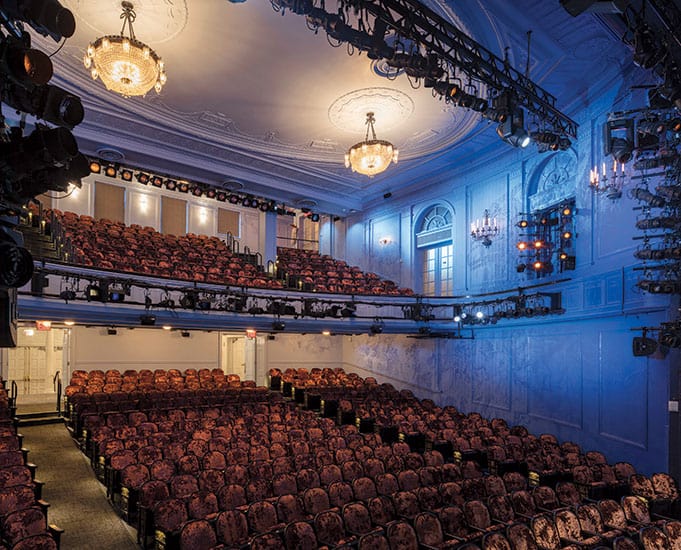The Hayes Theater Interior Design
- May 18, 2018
- Posted by: Paul
- Category: Architects, General Construction, Green Building, House Renovation

Produced in 1912 to feel like a salon, using 299 seats and windows in the rear, the Hayes Theater is also, following enlargements, nevertheless the tiniest broadway home at roughly 600 seats.
What drives David Rockwell about theater, he states, is the capacity to allow storytelling through design. An endeavor he along with his eponymous company adopted when New York’s Second Stage Theater requested them to reestablish an older Broadway home for the organization’s new residence, in addition to designing the set for the original generation within it.
The venue called the Small Theater constructed in 1912, the landmarked neo-Georgian construction was created by Harry Creighton Ingalls and F. Burrall Hoffman to get impresario Winthrop Ames, to elicit a romantic, salon-like encounter, with just 299 seats. Five decades after, its interior has been renovated from the noted theater architect Herbert Krapp, who included a balcony. It obtained yet another overhaul in 1979 and had been renamed the Helen Hayes four decades later.
Following a yearlong renovation, it appeared again in February since the Hayes Theater–with roughly 600 seats, the tiniest home on Broadway. Working together with EverGreene Architectural Arts, Rockwell Group invented a pixelated version of a single tapestry scene, stenciling it on the walls, also painted beneath in blue ombré colors. They also revived a decrease lobby and historic entrance, upgrading each with modern colors.
Rockwell, who has made over a dozen collections–winning a Tony Award for the past season’s Broadway revival of She Loves Me. Generated a spare generation for Second Stage’s very first series here: a resurrection of Kenneth Lonergan’s 2001 play Lobby Hero, that occurs in and out of a Manhattan apartment home lobby. He did so use an environment onstage which supplies a mere hint of location–elevator doors, desk, lost ceiling and entry allowing the viewers to view it as the figures do by rotating the reception sporadically during the play. Streetlights along with a backlit textural background for the outside scenes evoke town at night.
“I can not think about another art form where bodily transformation occurs in front of you,” says Rockwell. Like his company’s thoughtful renovation of this Hayes Theater, this deceptively straightforward and fluid staging captures the viewer with its delicate charm.
